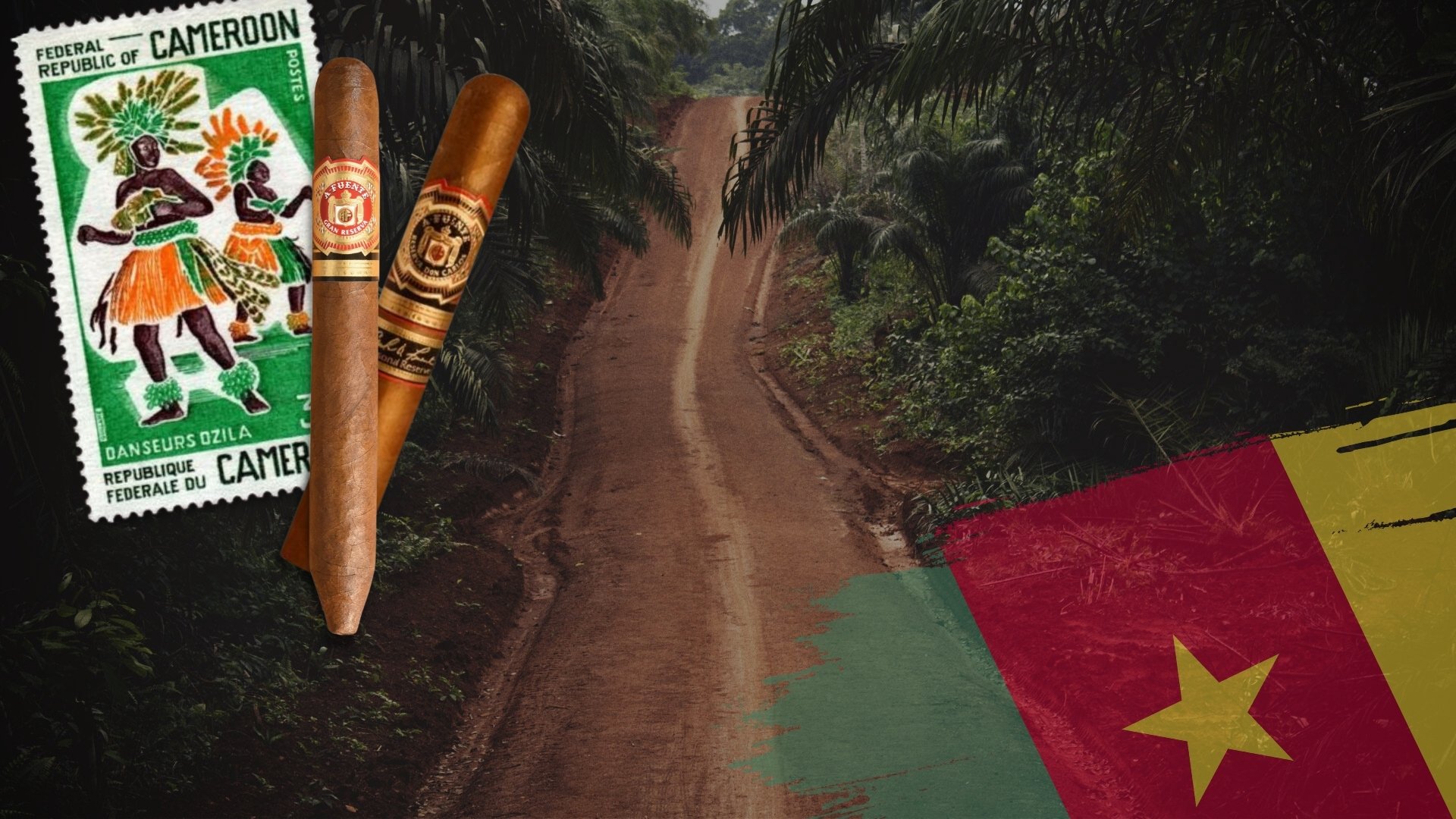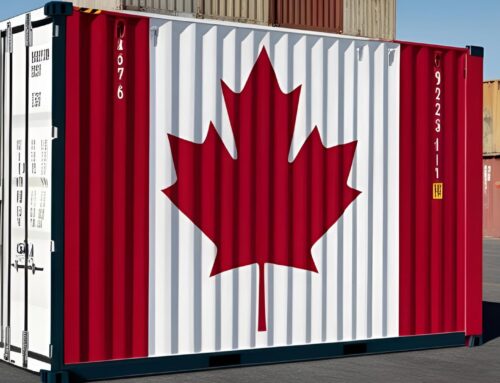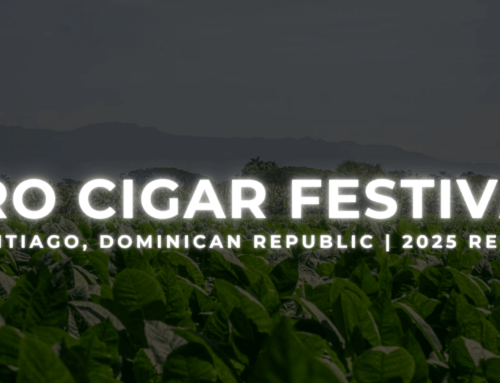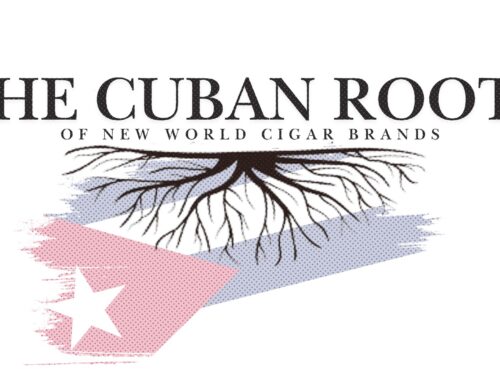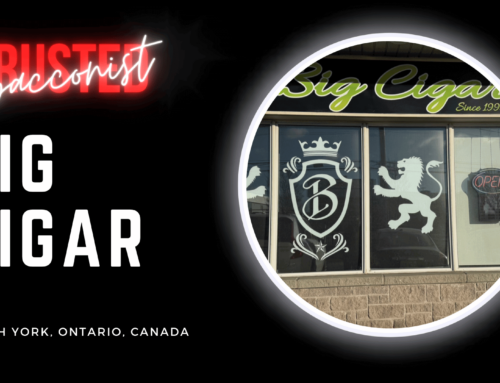Many cigar lovers who have tasted a cigar with a Cameroon wrapper on it will tell you that it makes for a unique and highly pleasurable smoking experience.
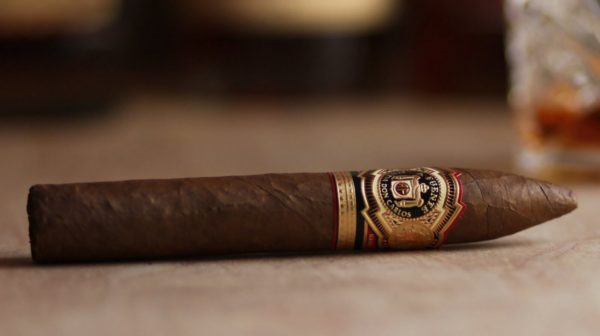
The Cameroon wrapper-clad Arturo Fuente Don Carlos Belicoso.
Not to be confused with tobacco that is grown from Cameroon seed elsewhere in the world, true Cameroon tobacco is grown in the Central African country of Cameroon.
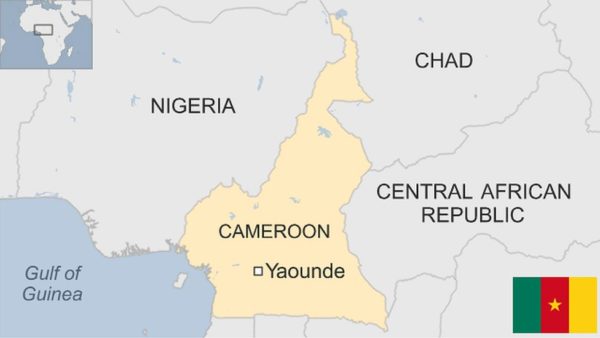
Tobacco grown in the adjacent Central African Republic is also often commonly classified as Cameroon.
The entire region has an abundance of rich soil which requires minimal fertilization. The temperature and humidity are ideal for growing tobacco.
Cameroon tobacco produces a very delicate and relatively small leaf, which requires the skilled hands of an advanced roller. Cameroon wrapper is said to deliver a delightfully sweet and spicy nuance to a cigar, while exhibiting a toothy, oily texture.
It is also a costly and difficult leaf to produce, and is grown within a secluded region within one of the most dangerous and corrupt places on the globe.
As a result, cigars with Cameroon-grown wrappers are in high demand.
The following piece will take a deeper look at Cameroon-grown tobacco, including its history, and how it can positively influence the taste and aromatics of a fine, hand-rolled cigar.
A Brief History of Cameroon Tobacco
Tobacco in Cameroon was initially cultivated by the Dutch who grew it from Sumatran seeds.
After World War I, France and Great Britain received a split rule to govern over Cameroon, which was previously under German colonial rule. Following WWII, the portion governed by France grew to encompass the majority of Cameroon.
It was the French that first set Cameroon tobacco in motion to be enjoyed on an international level.
The French government established SEITA (Société d’Exploitation Industrielle des Tabacs et des Allumettes), an organization which was responsible for the procurement and and export of Cameroon-grown tobacco.
Among the first major cigar manufacturers to seek out Cameroon tobacco was the J.C. Newman company, based out of Tampa, Florida. After the U.S. trade embargo on Cuba went into effect in 1962, manufacturers like J.C. Newman began running out of their Cuban tobacco reserves, and started to look to places like Cameroon for a suitable replacement.
In an interview with Marvin Shanken of Cigar Aficionado in 1997, Stanford Newman stated “We used the top grades of Cameroon, because I thought that if we had something of quality, we could keep our market. It [Cameroon tobacco] was not exactly a substitute. It had a different taste, but it was a very, very fine wrapper.”

Stanford Newman
Although the nation of Cameroon gained independence from France in 1960, SEITA maintained strict control of the region’s tobacco production for many years (almost a century in total).
During this time, SEITA implemented a form of greedy price-fixing and a complicated bidding process which sadly served as a deterrent to many global cigar makers like the Newmans from incorporating Cameroon wrappers into their products.
Declining interest resulted in diminishing crop supply and decreased tobacco quality, which ultimately forced SEITA to bring the exportation of Cameroon tobacco to a grinding halt in 1993.
This proved to be unfortunate timing as a global cigar boom was happening – and Cameroon was about to miss the bus.
With the possibility of Cameroon-grown tobacco becoming extinct, tobacco crop financier Richard “Rick” Meerapfel intervened to rescue the industry.
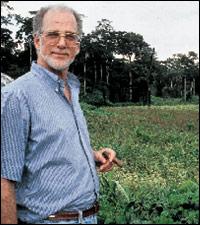
Rick Meerapfel
Based out of Brussels, Belgium, M. Meerapfel & Söhne Co., was among of the oldest tobacco brokerage families in the world. Rick Meerapfel was instrumental in recognizing the quality of properly-grown Cameroon tobacco, as well as its potential to serve as a key component to many wonderful cigar blends.
“I couldn’t just let it go,” Meerapfel once said in an interview. “I had to do something to keep the tobacco going.”
With an influx of millions of dollars invested to resurrect Cameroon tobacco, a new private organization called CETAC (Compagnie d’Exploitation des Tab’s Centrafricains) was established.
CETAC was a joint venture between the Meerapfel family and local Africans that would oversee in the growing, contracting, processing and shipping of high-quality Cameroon tobacco.
“Having spent ample time in Cuba, Meerapfel was very familiar with Cuban growing traditions, and strategically chose to integrate them into the tobacco growing processes in Cameroon.”
Cameroon was a largely unsafe place to travel. It had its fair share of crime, terrorism, diseases, and natural hazards.
The farms, which were isolated from much of civilization, were sometimes only accessible through extremely rough dirt roads on motorcycle or even at times, only on foot.
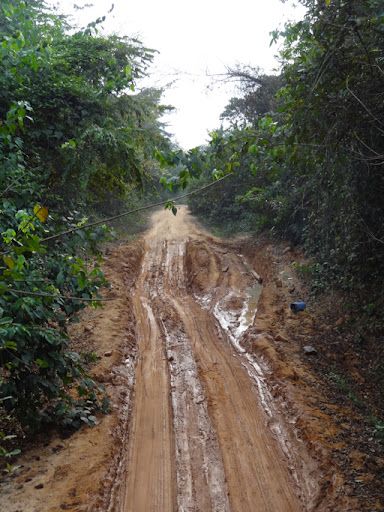
Rural roads are still difficult to traverse in Cameroon
Despite rampant corruption in government officials, local warring tribes, and a severe lack of infrastructure, Meerapfel managed to effectively navigate the often hostile Central African terrain, and align CETAC with the then 3,000-odd local farmers.
Growers were given specially selected seeds and were closely provided assistance by CETAC representatives along the way. Having spent ample time in Cuba, Meerapfel was very familiar with Cuban growing traditions, and strategically chose to integrate them into the tobacco growing processes in Cameroon.
He quickly developed great rapport with local growers and created great opportunities for many within the developing region. He also developed a great knowledge of the lay of the land, as well as the “ins-and-outs” of life in Cameroon.
Meerapfel simplified the tobacco purchasing process from the complicated mess that it was under SEITA’s control. This encouraged cigar makers to begin purchasing Cameroon tobacco once again through traditional purchasing methods where bales could be properly viewed prior to purchase and the price wasn’t rigged.
One of such cigar maker was the late Carlos Fuente Sr. In addition to other blends, Fuente Sr. utilized Meerapfel-grown Cameroon tobacco for the initial blend of his critically-acclaimed Arturo Fuente Don Carlos line, a cigar which still incorporates Cameroon wrapper to this very day.
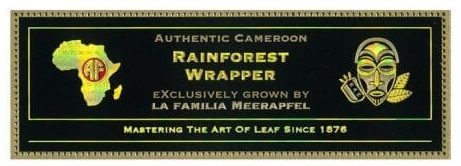
An Arturo Fuente seal ensures the authenticity of Meerapfel-grown Cameroon tobacco
Other Fuente releases like the Hemingway Signature, are prized for being among the world’s best cigars to incorporate a Cameroon wrapper.
Today, many cigar makers ranging from Arturo Fuente to Oliva to Rocky Patel utilize authentic Cameroon wrapper in some of their most acclaimed blends. Given the instability of Cameroon and the Central African Republic, it is still a challenging and expensive tobacco to bring from seed to cigar.

A group of Cameroon separatists. Currently a battle wages between the Francophone and Anglophone populations within Cameroon
Other cigar makers like La Aurora or Aladino, have had success in creating pleasurable blends that use tobacco grown from Cameroon seed in Ecuador or Honduras.
Though it is impossible to accurately replicate true Cameroon tobacco by growing it elsewhere, the outcome is typically a different, yet also highly enjoyable experience.
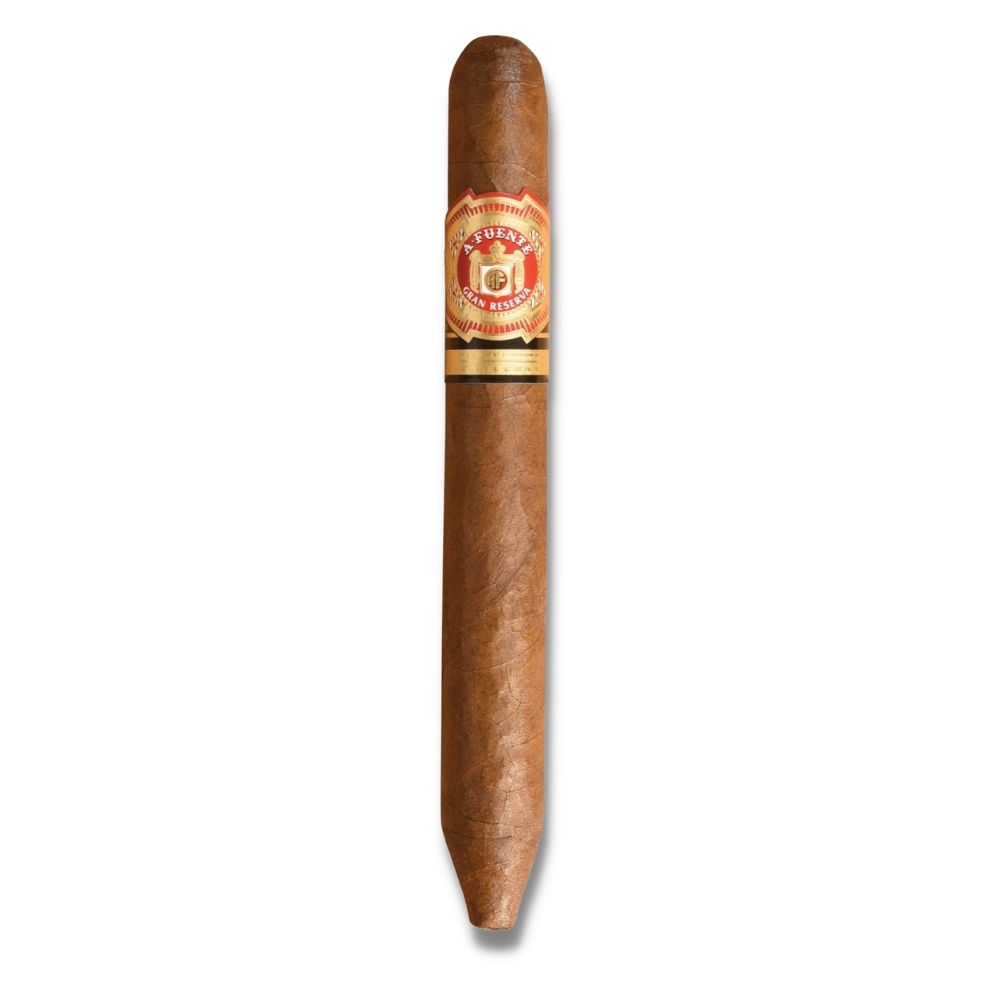
CIGAR PROFILE: Arturo Fuente Hemingway Signature
The Arturo Fuente Hemingway Signature cigars are Grand Corona-size perfectos handcrafted with a smooth, medium-bodied blend of vintage Dominican tobaccos and donning a silky African Cameroon wrapper. One of the world’s leading classic premium cigars, often hard to find.
Ugly Is Beautiful: The Characteristics Of Cameroon Tobacco
Cameroon tobacco is almost always used as wrapper tobacco.
Contrary to the many shade-grown leaves that are used as a wrapper, Cameroon tobacco is grown directly in the sun. In Cameroon, frequent cloud cover acts as a natural diffuser, eliminating the need for the cheesecloth tenting that is commonly employed for shade grown varietals.
Unlike most sun grown tobacco, Cameroon tobacco is silky thin and delicate, and requires additional care when being fermented. It is largely incapable of being fermented long enough to be a Maduro shade, and instead is procured commonly as a Colorado which is often chocolate-brown with a hint of green.
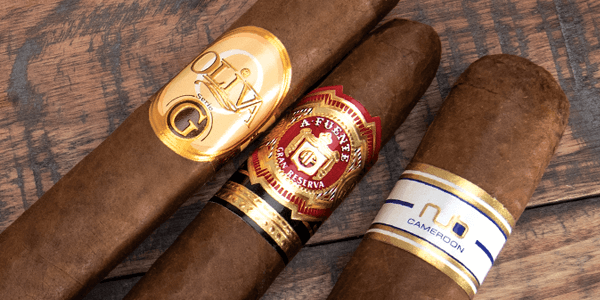
Given that Cameroon produces smaller leaves, its tobacco is not often used to cloak larger-sized cigars. There are exceptions of course – like Oliva’s popular NUB Cameroon, a very short but thick ring gauge cigar.
Cameroon-grown tobacco is often described as being very “toothy” and “oily”. This refers to a somewhat ugly, blemished and bumpy texture of the leaf with some sandpaper-like grit and an oily sheen.
The bumps contain pockets of oil. Most sun grown tobaccos typically exhibit a toothy texture and Cameroon-grown tobacco is often deemed “the toothiest of them all”.
While it can be effectively grown in other countries from Cameroon seed (most notably Ecuador), the leaf grown in Central Africa is typically regarded as being tastier and more aromatic.
It is prized for imparting a rich, sweet taste that finishes with a touch of spice. It is generally mild-medium in strength, but with ample character and complexity.
Conclusion
Despite magnificent strides for progress and innovation in the growing of tobacco in Cameroon and Central Africa, it is once again becoming rare and difficult to obtain. Though there are others, much of it is still procured by the Meerapfel family, who opt for quantity over quality when it comes to their Cameroon.
Sadly, Rick Meerapfel – the man responsible for saving Cameroon tobacco from extinction – passed away at the young age of 52 in 2004.
Survived by sons Jeremiah and Joshua, together they continue to create Cameroon tobacco of utmost quality today. Their Cameroon wrapper can be found on some of the world’s most revered cigar brands.
The next time you smoke a cigar dressed in a Cameroon wrapper, remember to appreciate the substantial effort that has goes into growing it in Central Africa and bringing it to life in a premium cigar for you to enjoy.
